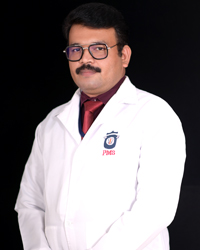The Department of Public Health Dentistry lays special emphasis on patient education, community-based disease prevention, health promotion & preventive dental measures. The department takes pride in being the only department which forms the first level of contact with the community and is keen on working for the community at the grass root level, with the only aim to detect and alleviate oral health related problems. The fine coordination between department and various other sectors; both private and government, guides us to conduct spectrum of activities keeping in mind the principles of primary health care.
The department regularly conducts dental health check-up and treatment camps &outreach programs in schools, institutions & rural areas and also actively involved in “Oral health research & training”.
The Undergraduate program aims to train the students in prevention and control of oral diseases and promotion of oral health through organized community efforts. The Department encourages the students to develop the skill of identifying health problems affecting the society, conduct health surveys, and provide health education and also deciding health strategies to solve the health problems. Students therefore, develop a positive and empathetic attitude towards the problems of the society and take responsibilities in improving their health. The students will also be trained for the planning, implementation and operation of dental public health programs, and also provide with an understanding of the processes through which health policies are developed and regulated.
The department operates a modern well equipped mobile dental clinic that travels to even remote locations and serves rural communities. Apart from that the department has two mobile dental chairs and two mobile dental units that help to reach even the unreached. The department owns a talking robot called Dr. PMS which can deliver health education to the public. The department also provides various health education models, community models and public addressing system for the purpose of public health education.
A para-clinical specialty of dentistry, Public Health Dentistry deals with the prevention of oral diseases in the community and promotion of oral health among the population. Dental public health focuses on collective wellbeing of the community and not on individual dental patients.
Role of Public Health Dentistry in Community Wellbeing
Public health dentistry recognizes that oral health is deeply interconnected with the overall health and wellbeing. It involves work in the community from the ground up to prevent and control dental diseases and improve dental wellness. Public health dentists are actively involved in the research, education, and strategic direction developed by health agencies to build a healthy community. They ensure that access to dental care is not restricted to certain sections of the community alone, but reach further to the underserved population as well. By educating the public about the importance of oral health, public health dentistry also aims to instill a sense of empowerment in individuals to take ownership of their own oral health and help them better the oral health of their loved ones.
Preventive Strategies in Public Health Dentistry
Prevention is the best strategy to promote good oral health. Therefore, public health dentists adopt focused prevention strategies in the communities they work with.
Oral Health Education
The most powerful strategy and effective intervention that can be implemented in public health dentistry is education of the masses. By ensuring that people are adequately informed about oral health and the implications of oral diseases on their overall health, it is possible to prevent the occurrence of many oral diseases. Education can be imparted through priority groups, health providers, community leaders and strong decision makers.
Conducive Environmental Influence
Lack of access to clean and safe drinking water can cause oral health deterioration leading to oral health issues like tooth loss, gum disease and oral cancer. Poor air quality leads to respiratory issues that can affect the oral cavity and cause conditions like dry mouth, gum disease, and infections. Climate and humidity are also causes of oral diseases and need to be addressed. By practising good oral hygiene, staying hydrated with clean drinking water and taking routine dental check ups, it may be able to mitigate the impact of environmental factors before they cause oral health damage.
Addressing Nutritional Needs
If a community has access to healthy food with good nutritional value, their overall health (including oral health) is seen to show an improvement. Public health dentistry also involves ensuring food distribution to the underserved population and vulnerable groups and offering dietary counselling to wean people away from unhealthy food choices.
Behavioural Modifications
Any prevention strategy conceived by health agencies is only effective when the necessary behavioural modifications are initiated and sustained successfully. Better oral health can only be achieved by providing information and educating the people on what they should and should not do. Discipline on the parts of the recipients of the information and their dedication towards making lifestyle and behavioural modifications is key to ensuring improvement of oral health.
Public Health Dentistry in Rural and Underserved Areas
The WHO estimates that over 95% of Indian adults have dental caries, with over 50% of them having peridontal disease. Access to timely dental care in rural and underserved areas is a great challenge as there is a scarcity of dental clinics and skilled professionals in these areas. Affordability of treatment is also a major reason for people neglecting dental problems until they become severe and irreversible. Public health dentistry plays an important role in educating the people as well as providing dental care through periodic visits and addressing major dental issues either directly or guiding them towards the appropriate channels.

